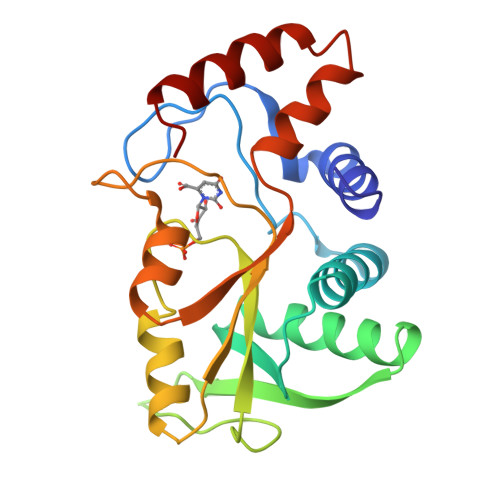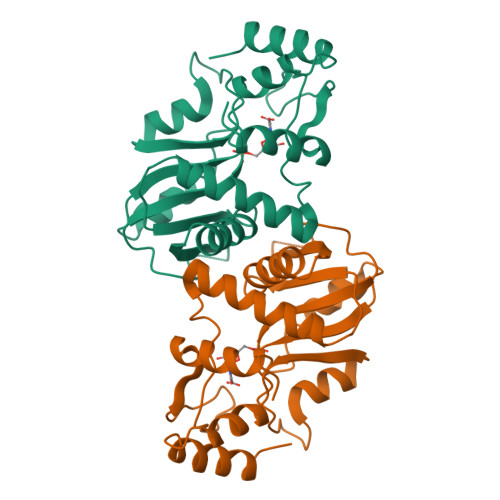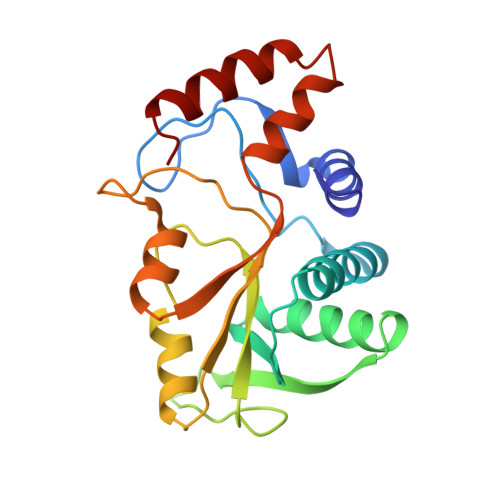Crystal structure of orotate phosphoribosyltransferase.
Scapin, G., Grubmeyer, C., Sacchettini, J.C.(1994) Biochemistry 33: 1287-1294
- PubMed: 8312245
- DOI: https://doi.org/10.1021/bi00172a001
- Primary Citation of Related Structures:
1STO - PubMed Abstract:
Phosphoribosyltransferases (PRTases) are enzymes involved in the synthesis of purine, pyrimidine, and pyridine nucleotides. They utilize alpha-D-5-phosphoribosyl-1-pyrophosphate (PRPP) and a nitrogenous base to form a beta-N-riboside monophosphate and pyrophosphate (PPi), and their functional significance in nucleotide homeostasis is evidenced by the devastating effects of inherited diseases associated with the decreased activity and/or stability of these enzymes. The 2.6-A structure of the Salmonella typhimurium orotate phosphoribosyltransferase (OPRTase) complexed with its product orotidine monophosphate (OMP) provides the first detailed image of a member of this group of enzymes. The OPRTase three-dimensional structure was solved using multiple isomorphous replacement methods and reveals two major features: a core five-stranded alpha/beta twisted sheet and an N-terminal region that partially covers the C-terminal portion of the core. PRTases show a very high degree of base specificity. In OPRTase, this is determined by steric constraints and the position of hydrogen bond donors/acceptors of a solvent-inaccessible crevice where the orotate ring of bound OMP resides. Crystalline OPRTase is a dimer, with catalytically important residues from each subunit available to the neighboring subunit, suggesting that oligomerization is necessary for its activity. On the basis of the presence of a common PRPP binding motif among PRTases and the similar chemistry these enzymes perform, we propose that the alpha/beta core found in OPRTase will represent a common feature for PRTases. This generality is demonstrated by construction of a model of the human hypoxanthine-guanine phosphoribosyltransferase (HGPRTase) from secondary structure predictions for HGPRTase and the three-dimensional structure of OPRTase.
Organizational Affiliation:
Department of Biochemistry, Albert Einstein College of Medicine, Bronx, New York 10461.



















